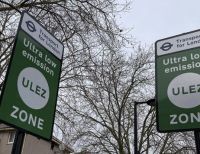An astonishing collection of African artwork collected during Britain’s first anthropological surveys of early 20th-Century West Africa is to go on display for the very first time at Cambridge’s Museum of Archaeology & Anthropology (MAA). The exhibition also features photographic portraits, archival materials and contemporary artistic responses from Nigeria and Sierra Leone.
In this politically- and emotionally-charged exhibition, the curators pose difficult questions about the nature of colonialism at the time and its legacies today.
[Re:] Entanglements: Colonial collections in decolonial times (22 June 2021 – 17 April 2022), is the culmination of the AHRC-funded Museum Affordances project led by Professor Paul Basu at SOAS University of London alongside Dr George Agbo of the University of Nigeria, Nsukka, and involving multiple partnerships in West Africa, the UK and beyond.
The project seeks to re-engage with the ethnographic archive assembled by the University of Cambridge-educated colonial anthropologist, Northcote Whitridge Thomas (1868-1936) in Southern Nigeria and Sierra Leone between 1909 and 1915.
The ‘Thomas Collection’ includes masks, drums, carved wooden figures and staffs, pottery, textiles, charms, dolls, photographs, sound recordings, botanical specimens, published work and field notes.
Above: Selection of ukhurhe rattle staffs commissioned to be made by Northcote Thomas in Benin City, Nigeria, in 1909. 1st main image: Ngene alusi shrine figure collected by Northcote Thomas in Awgbu, Nigeria, in 1911. Both images: George Agbo / Museum of Archaeology & Anthropology, University of Cambridge. 2nd main image: Northcote Thomas, photographed in southern Nigeria, 1909-10. Image: Royal Anthropological Institute.
Above: Selection of ukhurhe rattle staffs commissioned to be made by Northcote Thomas in Benin City, Nigeria, in 1909. 1st main image: Ngene alusi shrine figure collected by Northcote Thomas in Awgbu, Nigeria, in 1911. Both images: George Agbo / Museum of Archaeology & Anthropology, University of Cambridge. 2nd main image: Northcote Thomas, photographed in southern Nigeria, 1909-10. Image: Royal Anthropological Institute.
Northcote Thomas (pictured, c.1909-10) may be largely unknown today but this exhibition argues that his work and collection are more relevant and provocative than ever.
Thomas was known as a difficult and eccentric character, and while the Colonial Office in London initially supported his experimental work, colonial governments in West Africa viewed it as unwanted interference.
Northcote Thomas photographed in southern Nigeria, c.1909-10. Image: Royal Anthropological Institute
Northcote Thomas photographed in southern Nigeria, c.1909-10. Image: Royal Anthropological Institute
Curator Professor Paul Basu says: “They didn't take kindly to some academic telling them they should pay respect to local leaders. At the same time, Thomas didn’t do himself any favours – he alienated the colonial administration.
“It’s clear from Thomas’ correspondence that he had much less patience with colonial bureaucracy than he did with his local interlocutors. While the colonial government saw African power structures as arcane, he saw logic in them. Thomas was sympathetic to local ways of doing things and he took the magico-religious basis on which West African societies were ordered very seriously.”
Above: Paul Basu (left) with brass casters in Benin City, Nigeria. Image: George Agbo. Main images: 1st: Selection of mirror frames; 2nd: Selection of dolls, all collected by Northcote Thomas in southern Nigeria, 1909-11. Images: George Agbo / Museum of Archaeology & Anthropology, University of Cambridge.
Above: Paul Basu (left) with brass casters in Benin City, Nigeria. Image: George Agbo. Main images: 1st: Selection of mirror frames; 2nd: Selection of dolls, all collected by Northcote Thomas in southern Nigeria, 1909-11. Images: George Agbo / Museum of Archaeology & Anthropology, University of Cambridge.
Northcote Thomas studied history at Trinity College, Cambridge in the 1880s and 90s and was appointed Government Anthropologist by the British Colonial Office in 1909. He mistakenly believed that the British Museum would acquire his collections.
He sent an initial batch of “ethnographic specimens” there in 1909 and planned to send more. However, the then Keeper of Ethnographic Collections, Charles Hercules Read, turned him down writing: “I am by no means sure that I want these modern things made to order as it were…”
Eventually, Thomas offered his collection to his alma mater’s Museum of Archaeology & Anthropology. MAA accepted, reimbursed his expenditure, and provided a budget to continue collecting. Sound recordings from the surveys are now held by the British Library, the botanical specimens are in the Herbarium at Kew, while photographic archives are dispersed in different institutions including MAA, the Royal Anthropological Institute and the Nigerian National Museum in Lagos.
















